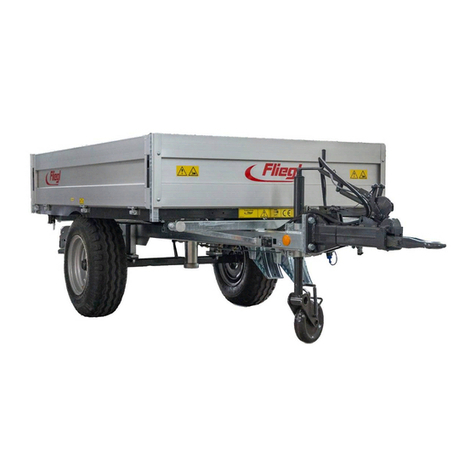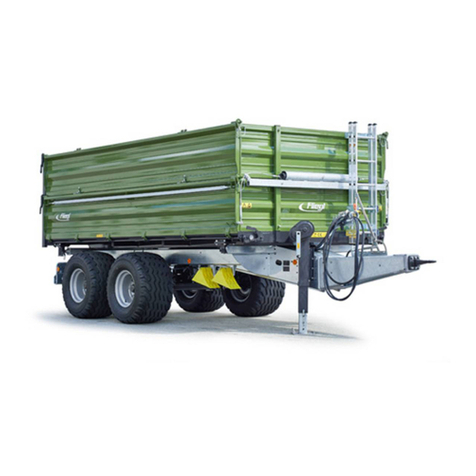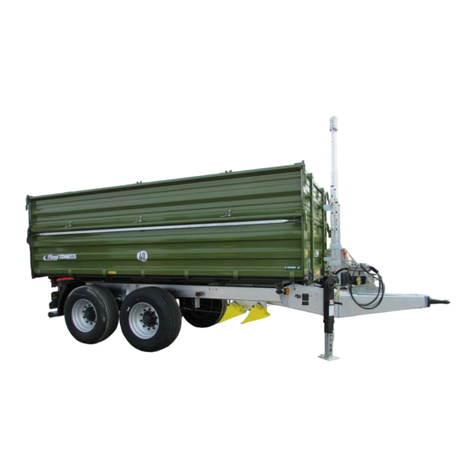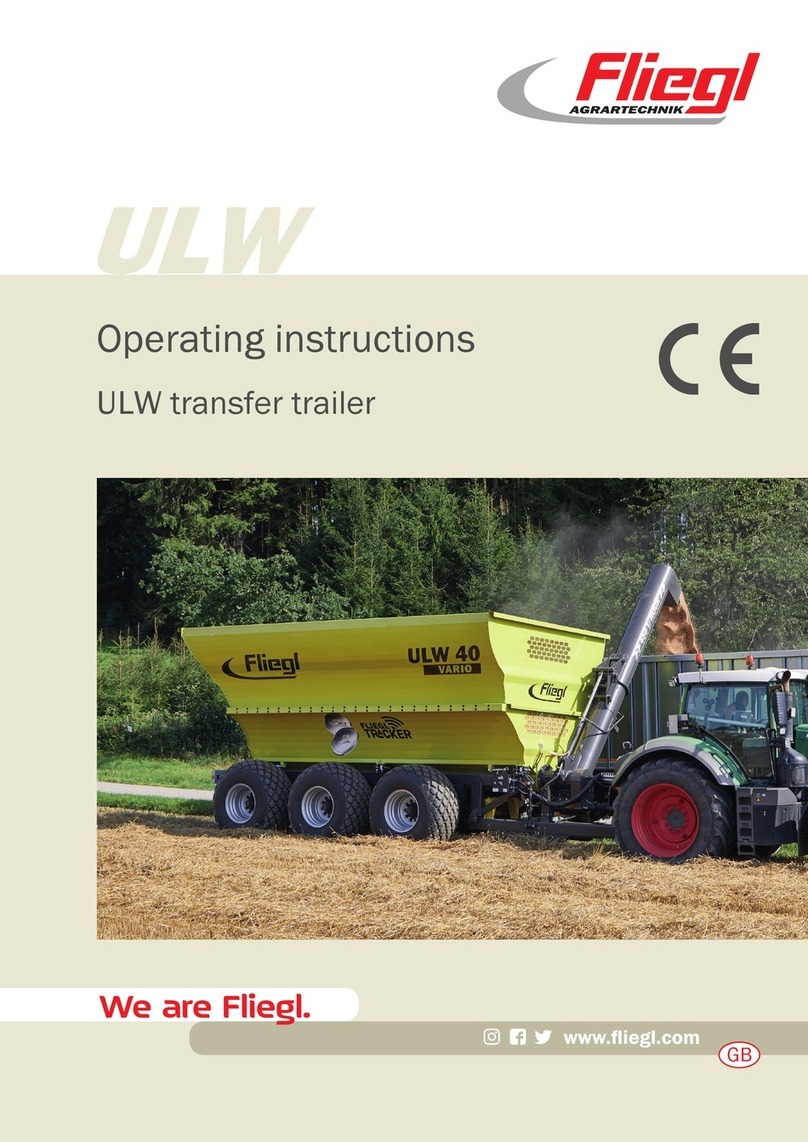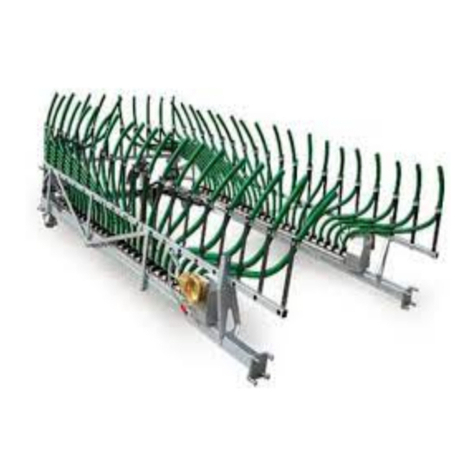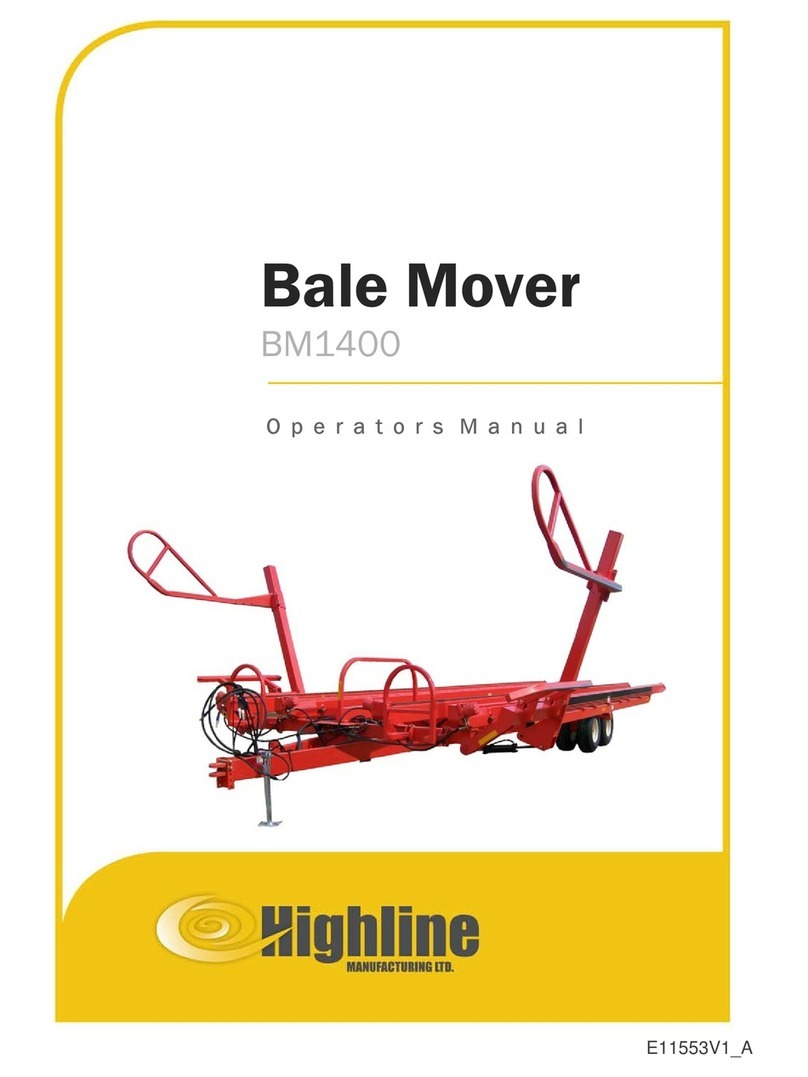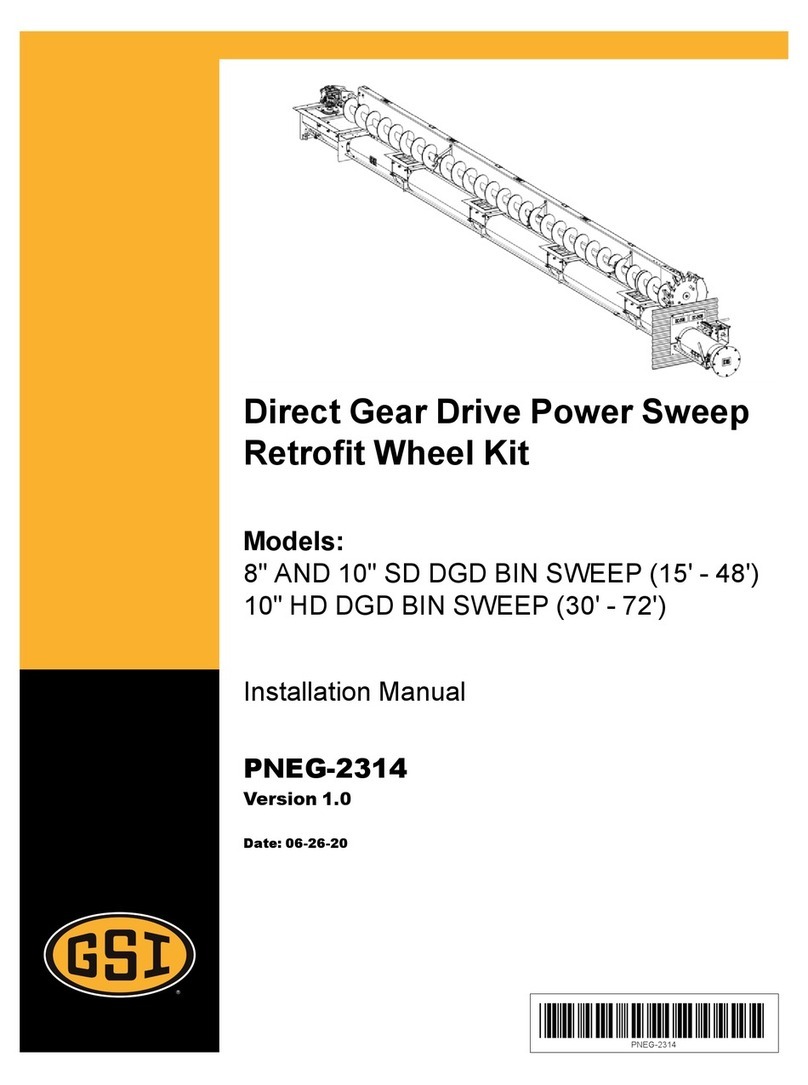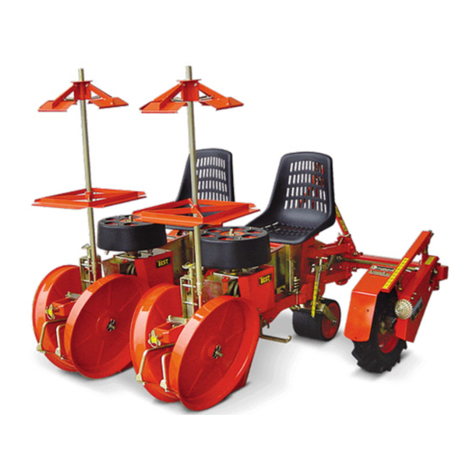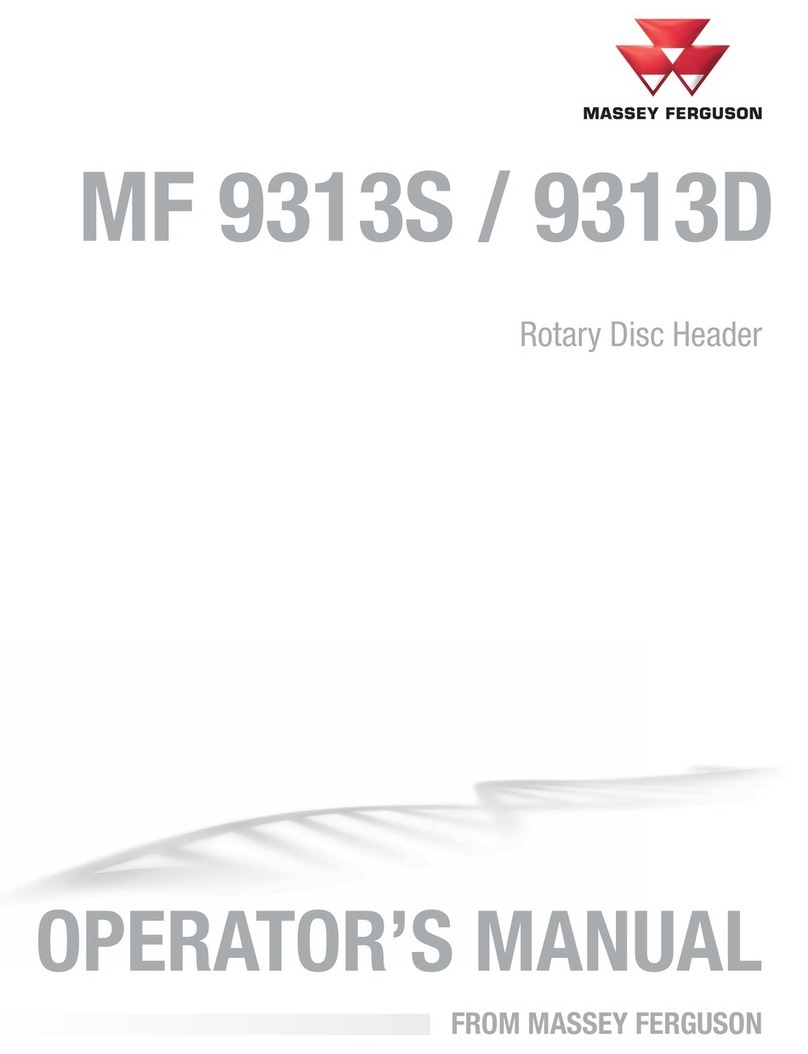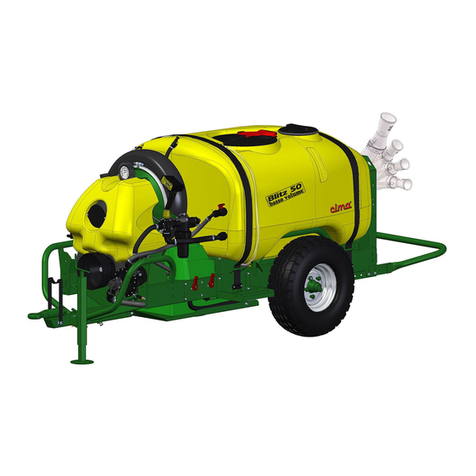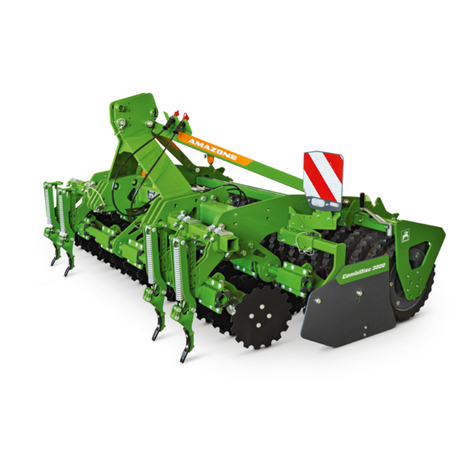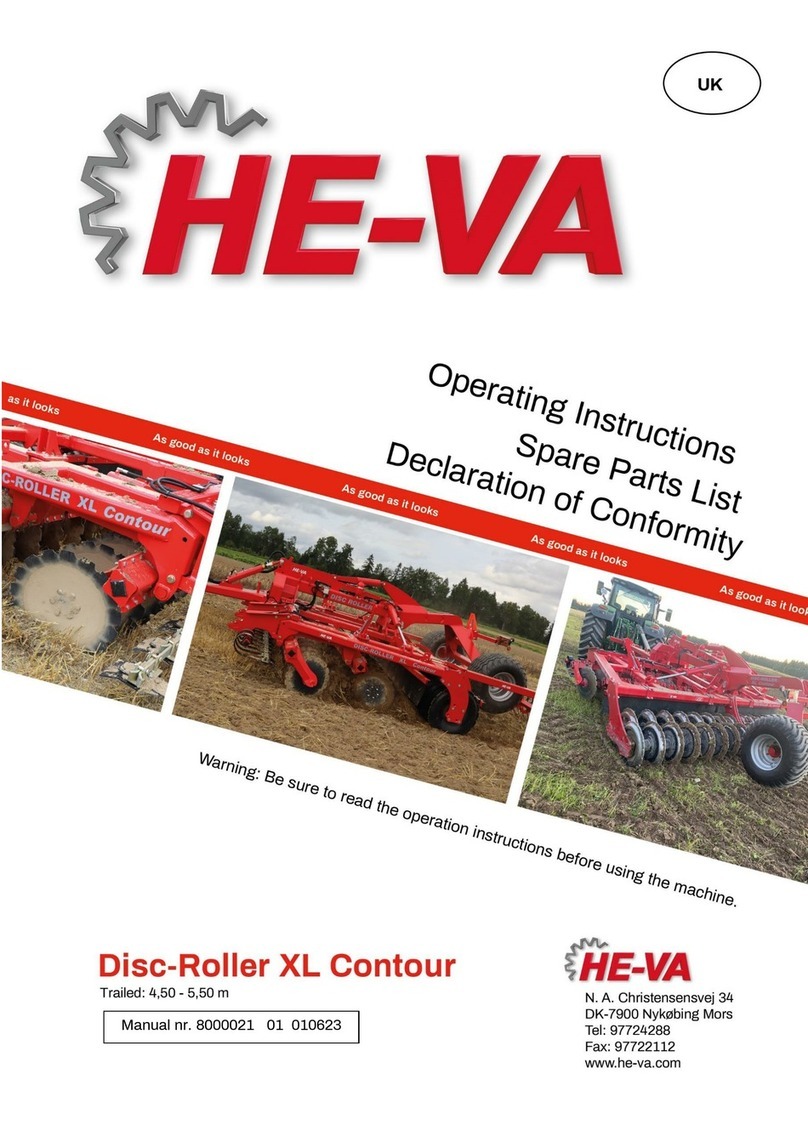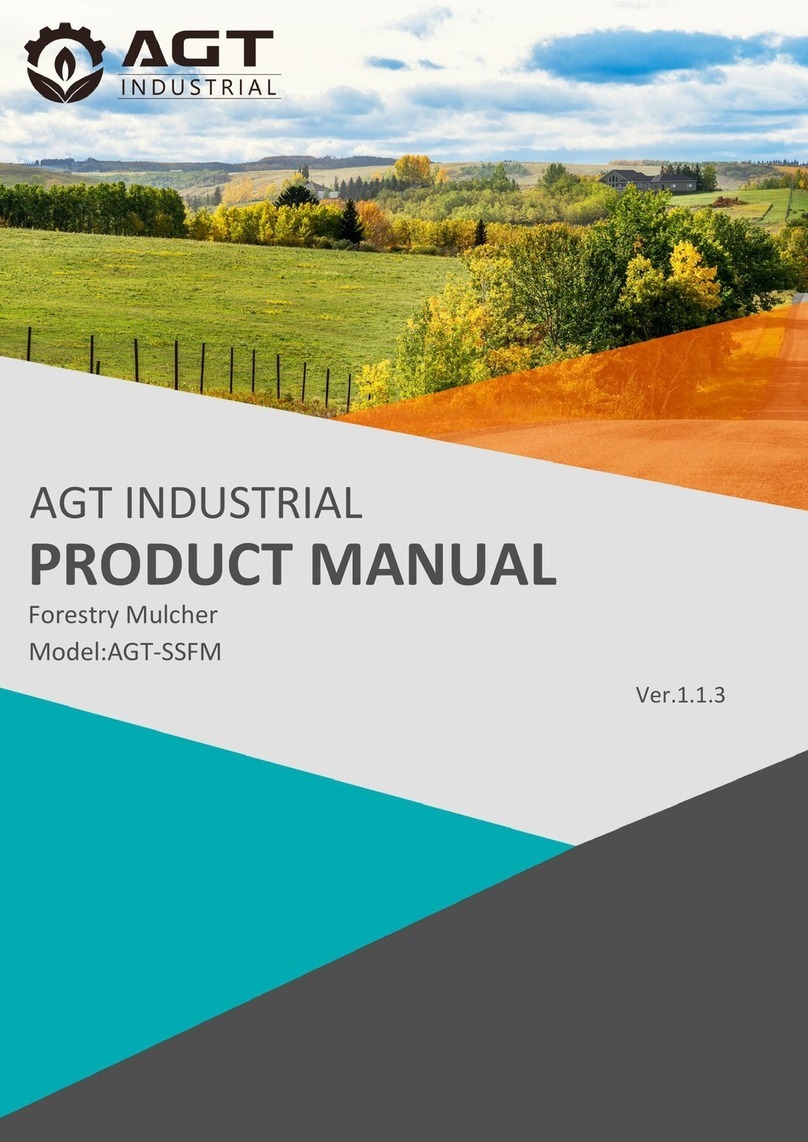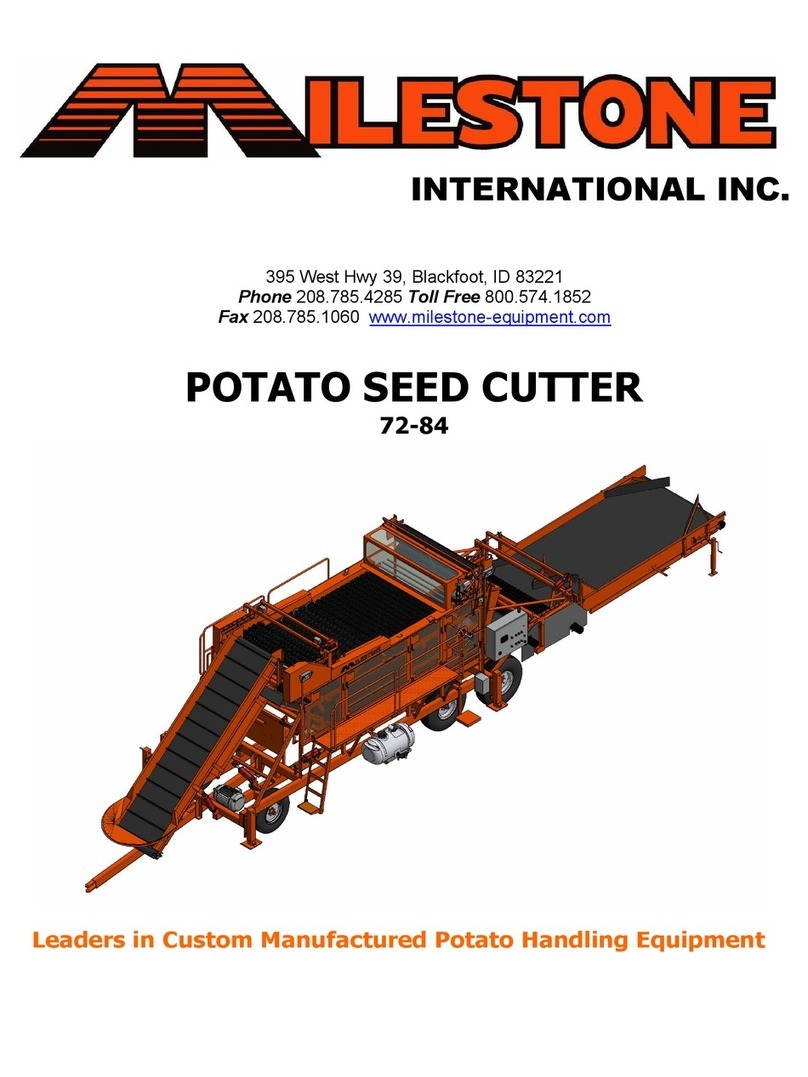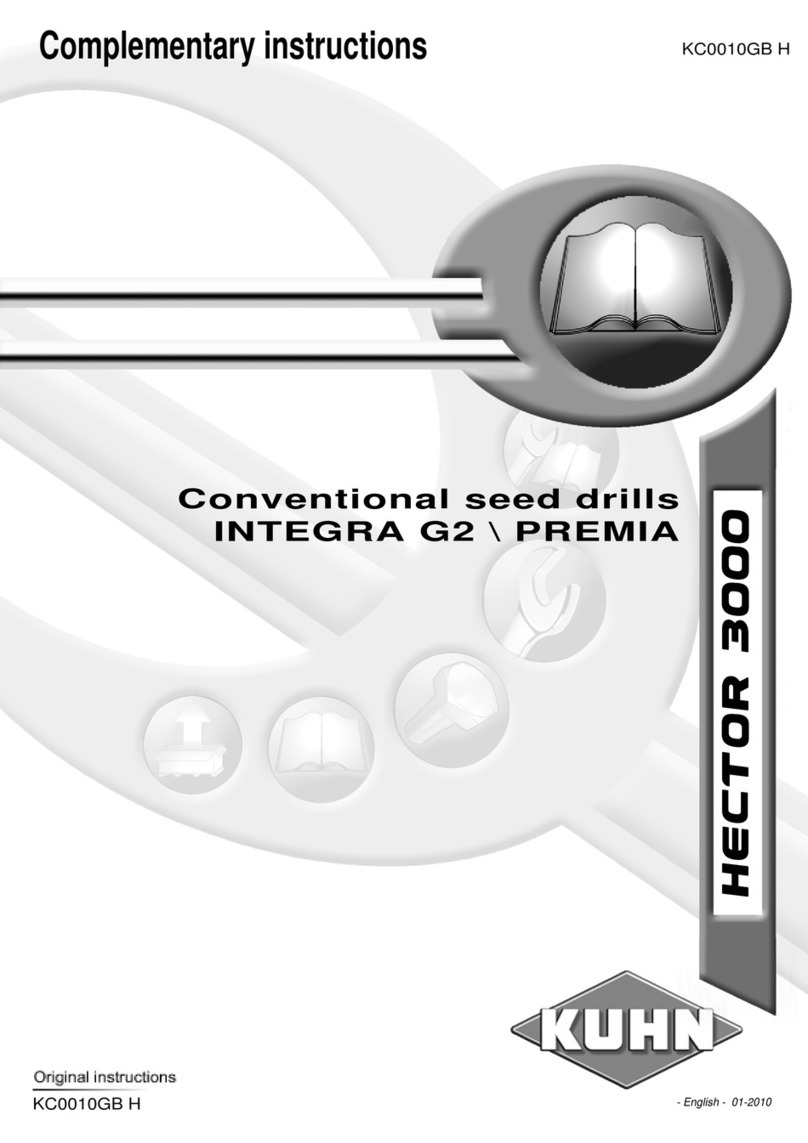Fliegl GIGANT User manual

Operating instructions
ASW push-off trailer
GB
We are Fliegl.
Translation of original operating instructions

Read these operating instructions prior to first-time start-up
and observe them at all times!
Retain for future reference!

Foreword
Dear valued customer,
Thank you for purchasing the Fliegl GIGANT push-off trailer.
Fliegl machines and attachments are manufactured with care under continuous monitoring.
The Fliegl GIGANT push-off trailer you have purchased is a product manufactured to the highest quality
standards.
To avoid accidents, and therefore personal injuries and material damage, you must read and understand
the corresponding cautionary and warning notices in these operating instructions and on the Fliegl
GIGANT push-off trailer before beginning operation or maintenance of the GIGANT trailer. These
operating instructions must therefore also be passed on to the operating personnel.
Before putting the Fliegl GIGANT push-off trailer into operation, every operator must be familiar with how
to handle the machine as described in these operating instructions.
The safety requirements must be strictly followed. Compliance with safety regulations applicable to your
country is also mandatory.
The Fliegl GIGANT push-off trailer can be attached to different vehicles, such as tractors.
The limits of use are described in this manual.
Any types of operation or use other than those described in these operating instructions, or beyond the
limits of use specified by the manufacturer, are strictly prohibited.


Contents
3
Contents
Foreword ..................................................................................................................................................4
Contents...................................................................................................................................................3
Legal notices ............................................................................................................................................9
Identification .......................................................................................................................................... 10
EC Declaration of Conformity................................................................................................................ 11
1. User instructions ............................................................................................................................ 12
1.1 Purpose of this document...................................................................................................... 12
1.2 Locations in the operating instructions.................................................................................. 13
1.3 Illustrations used.................................................................................................................... 13
1.4 Cross references................................................................................................................... 13
1.5 Terminology: "trailer", "machine", "vehicle"........................................................................... 13
1.6 Figures................................................................................................................................... 13
1.7 Scope of the document ......................................................................................................... 14
1.8 Presentation of safety instructions ........................................................................................ 14
1.9 Liability and damages............................................................................................................ 14
1.10 Duty to inform........................................................................................................................ 14
2. Basic safety instructions................................................................................................................. 15
2.1 Designated use...................................................................................................................... 18
2.2 Reasonably foreseeable misuse........................................................................................... 19
2.3 Service life of the machine .................................................................................................... 20
2.4 Risks when working with the machine................................................................................... 20
2.5 Residual risks........................................................................................................................ 20
2.6 Obligations of the operator.................................................................................................... 20
2.7 Obligations of personnel........................................................................................................ 21
2.8 Qualification of operating personnel...................................................................................... 21
2.9 Qualification of specialist personnel...................................................................................... 21
2.10 Personal protective equipment.............................................................................................. 22
2.11 Operational safety ................................................................................................................. 22
2.11.1 Operation without correct start-up................................................................................... 22
2.11.2 Safeguarding perfect technical condition......................................................................... 22
2.11.3 Danger due to machine damage..................................................................................... 22
2.11.4 Technical limits................................................................................................................ 23
2.12 Safety and protective devices ............................................................................................... 23
2.12.1 Emergency stop device ................................................................................................... 23
2.12.2 Description of additional safety and protective devices................................................... 23
2.12.3 In case of faulty protective devices.................................................................................. 23
2.12.4 Inspecting safety and protective devices......................................................................... 23
2.13 Workstation of operating personnel....................................................................................... 24

Contents
4
2.14 Danger areas.........................................................................................................................24
2.14.1 Danger zone around PTO................................................................................................25
2.14.2 Danger zone around machine parts that continue running..............................................25
2.14.3 Safety distance from overhead lines................................................................................25
2.15 Machine identification ............................................................................................................26
3. Description of the machine.............................................................................................................28
3.1 Applications............................................................................................................................28
3.2 Design variants –standard....................................................................................................28
3.3 Functional description............................................................................................................28
3.4 Layout of the machine ...........................................................................................................29
3.5 Assemblies and components.................................................................................................30
3.6 Technical data –standard equipment ...................................................................................32
4. Transport and installation...............................................................................................................34
4.1 Basic requirements................................................................................................................34
4.2 Supply and installation...........................................................................................................34
4.2.1 Drawbar eye connection ..................................................................................................34
4.2.2 Establishing the electrical connection..............................................................................35
4.2.3 Compressed air supply ....................................................................................................36
4.2.4 Establishing hydraulic connections..................................................................................37
5. Start-up...........................................................................................................................................39
5.1 First-time start-up...................................................................................................................39
5.2 Check before start-up............................................................................................................39
5.3 Returning to service...............................................................................................................39
6. Preparation and setup....................................................................................................................40
6.1 Draw gear ..............................................................................................................................40
6.1.1 Draw gear with top/bottom attachment............................................................................40
6.1.2 Hydraulically sprung draw gear........................................................................................40
6.1.3 Drawbar............................................................................................................................41
6.1.4 Ball head coupling............................................................................................................41
6.1.5 Installing forced steering on the towing vehicle (optional)...............................................42
6.2 Setting up the forced steering (optional)................................................................................44
6.3 Pressurised air suspension (optional) ...................................................................................47
6.4 Compressed air brake system...............................................................................................48
6.4.1 Brake system with manual control valve..........................................................................48
6.4.2 Brake system with ALB, brake force regulator.................................................................49
6.4.3 Brake system –release valve..........................................................................................49
6.4.4 Brake system with combined service/parking brake (Tristop) .........................................50
6.5 Hydraulic brake (optional)......................................................................................................52
6.5.1 Hydraulic brake without load adjustment valve................................................................52

Contents
5
6.5.2 Hydraulic brake with load adjustment valve .................................................................... 52
6.6 Parking brake ........................................................................................................................ 53
6.6.1 Spindle brake / parking brake.......................................................................................... 53
6.6.2 Farmer stop –parking brake ........................................................................................... 53
6.7 Hydraulic system................................................................................................................... 54
6.7.1 Standard constant flow version (open centre, OC) ......................................................... 54
6.7.2 Additional load sensing (LS) version [also known as "power beyond"]........................... 54
6.7.3 Load sensing or constant flow operation......................................................................... 55
6.8 Setting the flow control valve/potentiometer (optional) ......................................................... 56
6.8.1 Mechanical flow control valve.......................................................................................... 56
6.8.2 Electrical potentiometer................................................................................................... 57
6.8.3 Manual emergency operation of the hydraulic control..................................................... 58
6.8.4 Cause of control unit malfunction.................................................................................... 59
6.8.5 Adjusting the grate extension .......................................................................................... 59
6.9 Drive shaft for attachment (optional)..................................................................................... 60
6.10 Electrical systems.................................................................................................................. 60
7. Use and operation.......................................................................................................................... 61
7.1 Trailer operation .................................................................................................................... 61
7.1.1 Before operation .............................................................................................................. 61
7.1.2 Setting up the trailer coupling on the towing vehicle ....................................................... 61
7.1.3 Coupling the trailer........................................................................................................... 62
7.1.4 Attaching the drive shaft (optional).................................................................................. 63
7.1.5 Detaching the drive shaft (optional)................................................................................. 64
7.1.6 Electrical and electronic control accessories................................................................... 64
7.1.7 Conducting a trial run....................................................................................................... 65
7.1.8 Uncoupling the trailer....................................................................................................... 65
7.2 Working with the machine ..................................................................................................... 66
7.2.1 General safety and operating instructions....................................................................... 66
7.2.2 Loading the trailer............................................................................................................ 67
7.2.3 Emptying the trailer.......................................................................................................... 68
7.3 Chassis lock .......................................................................................................................... 69
7.3.1 Chassis lock, bolted......................................................................................................... 69
7.3.2 Chassis lock, Twistlock (optional).................................................................................... 69
7.3.3 Using the chassis lock..................................................................................................... 70
7.4 Loading and unloading swap bodies..................................................................................... 71
7.4.1 Parking height.................................................................................................................. 71
7.4.2 Attaching the lifting cylinders to the swap chassis .......................................................... 72
7.4.3 Using the supporting feet................................................................................................. 72
7.4.4 Loading and unloading the swap body............................................................................ 73

Contents
6
8. Basic equipment (standard, optional).............................................................................................74
8.1 Draw gear ..............................................................................................................................74
8.1.1 Rigid traction bar..............................................................................................................74
8.1.2 Traction bar with sprung draw gear .................................................................................74
8.1.3 Drawbar............................................................................................................................74
8.2 Flange couplings....................................................................................................................74
8.3 Supporting mechanism..........................................................................................................75
8.4 Swap chassis.........................................................................................................................75
8.5 Moving panel and sliding floor...............................................................................................75
8.6 Front grate extension / tension cable ....................................................................................75
8.7 Axle adjustment.....................................................................................................................76
8.7.1 Manual axle adjustment...................................................................................................76
8.7.2 Hydraulic axle adjustment (optional)................................................................................76
8.8 Air suspension (optional).......................................................................................................77
8.9 Steered trailing axle...............................................................................................................77
9. Accessories ....................................................................................................................................78
9.1 Reversing/monitoring camera................................................................................................78
9.2 Lights .....................................................................................................................................78
9.2.1 Marker lights.....................................................................................................................78
9.2.2 Warning lamp...................................................................................................................78
9.2.3 Beacon light .....................................................................................................................78
9.2.4 Working light ....................................................................................................................78
9.3 Potentiometer (optional) ........................................................................................................79
9.4 Cardan shaft drive for auxiliary devices.................................................................................79
9.5 Underride guard.....................................................................................................................79
9.5.1 Rear underride guard (mechanical, hydraulic).................................................................79
9.5.2 Side impact protection .....................................................................................................80
9.6 Protect package.....................................................................................................................80
9.7 Folding side panel, mechanical .............................................................................................80
9.8 Load space covers.................................................................................................................81
9.8.1 Sliding tarpaulin ...............................................................................................................81
9.8.2 Speed Cover roll net ........................................................................................................84
9.8.3 TopLift hydraulic folding roof............................................................................................85
9.8.4 Toplift light hydraulic folding roof .....................................................................................85
9.9 Tyre pressure control system ................................................................................................86
9.9.1 Pneumatic control (1-line system) ...................................................................................87
9.9.2 ISOBUS control (2-line system).......................................................................................87
9.9.3 Compressor unit for tyre pressure control system...........................................................89
9.10 Fliegl Trailer Control (FTC)....................................................................................................90

Contents
7
9.11 Fliegl weighing system FWS ISOBUS................................................................................... 90
9.11.1 Bluetooth thermal printer for FWS................................................................................... 90
9.11.2 External display for FWS................................................................................................. 90
9.12 Fliegl Tracker......................................................................................................................... 91
9.13 ISOBUS universal terminal.................................................................................................... 91
9.14 Additional accessories........................................................................................................... 91
10. Service and maintenance.......................................................................................................... 92
10.1 Customer service................................................................................................................... 92
10.2 Replacement parts ................................................................................................................ 92
10.3 Fliegl VIN (vehicle ID number) and type plate....................................................................... 93
10.4 Operational maintenance ...................................................................................................... 94
10.4.1 General instructions for maintenance.............................................................................. 94
10.4.2 Cleaning the vehicle ........................................................................................................ 95
10.4.3 Corrosion protection ........................................................................................................ 96
10.4.4 Lubrication schedule........................................................................................................ 96
10.4.5 Tyres and wheels............................................................................................................. 98
10.5 Maintenance of the brake system ......................................................................................... 99
10.5.1 Maintenance of the compressed air brake system........................................................ 100
10.5.2 Maintenance of the air suspension................................................................................ 101
10.6 Checking the seals on the moving panel and sliding floor .................................................. 102
10.7 Maintenance of the tyre pressure control system (optional) ............................................... 102
10.8 Troubleshooting and fault elimination.................................................................................. 103
10.8.1 List of warning and fault signals .................................................................................... 103
10.9 Decommissioning................................................................................................................ 105
10.9.1 Temporary shutdown..................................................................................................... 105
10.9.2 Storage conditions......................................................................................................... 105
10.9.3 Disassembly and final shutdown ................................................................................... 105
10.9.4 Scrapping and recycling ................................................................................................ 105
11. Brake system........................................................................................................................... 106
12. Electrics................................................................................................................................... 107
12.1 Contact assignment plan..................................................................................................... 107
12.2 Rear light model .................................................................................................................. 107
13. Screw tightening torques......................................................................................................... 108
14. Schematic –tyre pressure control system .............................................................................. 109
14.1 Electro/pneumatic diagram –tandem.................................................................................. 109
14.2 Electro/pneumatic diagram –tridem.................................................................................... 110
15. Axles........................................................................................................................................ 111
15.1 Axle assemblies................................................................................................................... 111
15.1.1 Titan tandem assembly ................................................................................................. 111

Contents
8
15.1.2 Titan Plus tandem assembly..........................................................................................111
15.1.3 Gigant tandem assembly...............................................................................................111
15.1.4 Gigant Plus tandem assembly.......................................................................................111
15.1.5 Tandem hydraulic suspension.......................................................................................111
15.1.6 Tandem air suspension..................................................................................................111
15.1.7 Gigant tridem assembly.................................................................................................112
15.1.8 Gigant Plus tridem assembly.........................................................................................112
15.1.9 Tridem hydraulic suspension.........................................................................................112
15.1.10 Tridem air suspension....................................................................................................112
15.2 Axle maintenance work........................................................................................................112
16. Appendix..................................................................................................................................113
16.1 Designation of the hydraulic connections............................................................................113
16.2 Safety and operating conditions of the drive shafts.............................................................115
16.3 Maintenance information .....................................................................................................119
16.4 Conversion table..................................................................................................................120
17. Index........................................................................................................................................121

Legal notices
9
Legal notices
1. When the push-off trailer is delivered, check immediately to determine whether the machine is
complete. State any complaints to the freight forwarder, have them certified on the delivery
documents and inform the delivering plant within 14 days after you become aware of the problem
(see "Scope of delivery").
2. The manufacturer is liable for technical defects. The owner is liable for defects that were caused
by improper operation.
The warranty period is 1 year from delivery.
3. At our discretion, the warranty will either cover the cost of repair of the faulty part or replacement
of the part, or delivery of the part from the factory, carriage due. Any other claims for
compensation (such as for losses due to business interruption) are expressly excluded.
4. The warranty will be invalidated if the attachment or device is modified by installing third-party
parts without our knowledge or prior agreement, especially if improper modifications were made.
5. The warranty will also be invalidated if a defect is not rectified completely and correctly
immediately after it is discovered. Repairs required for functional reasons need our prior approval
if a claim is to be made for full or partial compensation of expenses.
6. Liability is excluded for damage to the push-off trailer resulting from exceeding the allowable
working capacity or transport speed.
The warranty does not cover natural wear, damage resulting from negligent or improper handling
of the machine, or storage and corrosion damage.
7. Parts not manufactured by ourselves are covered by the warranty provided by the relevant
manufacturer. Machine parts for which claims are made under the terms of the warranty must be
sent without delay to our address in Mühldorf for the purpose of material examination to
determine the damage. If a replacement is made, these parts become our property.
8. Legal warranty provisions also apply to the Fliegl push-off trailer.

Identification
10
Identification
Machine identification data
Manufacturer:
Fliegl Agrartechnik GmbH
Product:
GIGANT push-off trailer
Type:
ASW 110, ASW 140, ASW 160,
ASW 256, ASW 261, ASW 271,
ASW 281, ASW 378, ASW 381,
ASW 388, ASW 391, ASW 3101
Serial number:
WGJXXXXXXXXXXXXXX
Manufacturer details
Fliegl Agrartechnik GmbH
Bürgermeister-Boch-Straße 1
84453 Mühldorf am Inn, Germany
Telephone: +49 (0)8631 307 - 0
Fax: +49 (0)8631 307 - 550
E-mail: info@fliegl.com
Internet: www.fliegl.com
Formal details of operating instructions
Document no.:
Version/revision:
Creation date:
Last revision:
1-002B06203.1
3.1
13/03/2015
04/08/2020
Language of original operating instructions: German
(Translation of original operating instructions)
Copyright Fliegl, 2020. All rights reserved.
Reproduction, in whole or in part, is only permitted with the approval of Fliegl.
We are constantly developing and enhancing our products and therefore reserve the right to make changes to
them without prior notification.
This may result in differences in the illustrations and descriptions in these operating instructions.

Declaration of conformity
11
EC Declaration of Conformity
As stipulated in EC Machinery Directive 2006/42/EC, Annex II, 1.A (ORIGINAL)
Manufacturer:
Fliegl Agrartechnik GmbH
Bürgermeister-Boch-Straße 1
84453 Mühldorf am Inn, Germany
Person residing in the European Community authorised to compile the relevant technical
documentation:
Kopold Gerald
Fliegl Agrartechnik GmbH
Bürgermeister-Boch-Straße 1
84453 Mühldorf am Inn, Germany
Description and identification:
Product: Push-off trailer
Type: ASW 110, ASW 140, ASW 160, ASW 256, ASW 261, ASW 271, ASW 281, ASW 381, ASW 391,
ASW 3101, ASW D 378, ASW D 388, ASW 271 GreenTec, ASW 281 GreenTec, ASW 381 GreenTec,
ASW 391 GreenTec, ASW 160 FOX, ASW 256 Compact FOX, ASW 261 Compact FOX, ASW 271
Compact FOX, ASW 281 FOX, ASW 281 TAURUS FOX, ASW 391 TAURUS FOX
Project designation: Fliegl ASW
Trade name: Fliegl ASW GIGANT push-off trailer
Function: Transport trailer with sliding unit
It is expressly stated that this machine complies with all relevant provisions of the following EC
directives:
2006/42/EC:2006-05-17 EC Machinery Directive 2006/42/EC
Source of the harmonised standards applied in accordance with Article 7(2):
ISO 12100:2010 Safety of machinery –General principles for design –Risk assessment and risk
reduction
Mühldorf am Inn 04/08/2020
Place Date

User instructions
12
1.User instructions
This manual provides information about the
Structure
Function
Operation
Maintenance
Accessory parts
of the push-off trailer and ensures long, problem-free operation if it is carefully observed. In case of
malfunctions, it can be used to troubleshoot and rectify errors.
The purpose of the safety instructions is to prevent personal injury and damage to the push-off trailer. All
operators are required to read these safety instructions and comply with them at all times. The
regulations of agricultural employers' liability insurance associations also apply.
Fliegl assumes no liability and honours no warranty for damage and malfunctions resulting from failure
to comply with the operating instructions.
This information is required to ensure a smooth replacement parts ordering
process:
Copy the relevant information from the type plate into the box below:
For replacement part orders please contact:
Fliegl Agro-Center GmbH
Maierhof 1
84556 Kastl, Germany
Tel.: +49 (0)8671 / 9600 - 0
Fax: +49 (0)8671 / 9600 - 71
E-mail: info@agro-center.de
www.agro-center.de
Replacement parts must satisfy the technical requirements stipulated by the vehicle
manufacturer as a minimum.
This requirement is always met when using Fliegl original replacement parts.
1.1 Purpose of this document
These operating instructions:
- Describe the function, operation and maintenance of the machine
- Provide important advice for safe and efficient handling of the machine
Vehicle ID no.
(serial number)
…………………………………………………………………………………
Type
…………………………………………………………………………………
Year of manufacture
…………………………………………………………………………………

User instructions
13
1.2 Locations in the operating instructions
All directions and locations in these instructions are based on the operator's workstation.
Rear Front
Right side view
Fig. 1:Locations in the documentation
Top
Front Rear
Fig. 2:Main view of the ASW push-off trailer (model may vary)
1.3 Illustrations used
Instructions and system responses
The steps to be taken by operating personnel are presented in the form of a (numbered) list.
These steps must be followed in the correct order. The system response to each operator action is
marked with an arrow. Example:
Operator action step 1
System response to operator action step 1
1.4 Cross references
Cross references to other points in the operating instructions appear in the text along with the relevant
chapter and subchapter or section.
1.5 Terminology: "trailer", "machine", "vehicle"
Within this document, the push-off trailer is also referred to as the "trailer", "machine" or "vehicle".
1.6 Figures
The figures in this document do not always depict the exact machine type.
The information relating to the figures always corresponds to the machine type described in this
document.

User instructions
14
1.7 Scope of the document
In addition to the standard models, B variants of the machine are also described in this document. Your
machine may deviate from this.
1.8 Presentation of safety instructions
Danger!
Imminent risk that will lead to serious bodily harm or death.
Warning!
Potentially hazardous situation that could lead to serious bodily harm or death.
Caution!
Potentially hazardous situation that could lead to minor bodily harm. Also warns
against potential damage to property.
Notice!
Potentially harmful situation in which the product or other property in its vicinity
could be damaged.
Important!
For usage instructions and other helpful information.
1.9 Liability and damages
The product must only be operated by persons who are familiar with the operating instructions, the
product and national laws, directives and regulations relating to health and safety at work as well as
accident prevention. We accept no liability for personal or material damage caused, or contributed to, by
untrained persons due to non-compliance with regulations regarding health and safety at work as well as
accident prevention.
Based on the specifications in these operating instructions, Fliegl Agrartechnik GmbH assumes no
liability for direct or consequential damage attributable to improper operation or maintenance. For your
own safety, you should only use original replacement parts and accessory products. Fliegl Agrartechnik
GmbH assumes no liability for the use of other products and any resulting damage. No claims for
modification of delivered products can be made on the basis of the information, images and descriptions
provided in this manual.
1.10 Duty to inform
These operating instructions are to be considered part of the push-off trailer.
If the machine is passed on to another party by the customer, the operating instructions must also be
passed on and the party receiving the machine must be instructed regarding the regulations cited above.
Only the procedures described in these operating instructions are safe.
Read and observe the contents of chapter 2 Basic safety instructions before first using the
machine.
Before performing any work with the machine, always read and observe the contents of the
relevant sections of the operating instructions.
The operating instructions must be stored such that they are always on hand for the machine
user.

Safety instructions
15
2.Basic safety instructions
Failure to observe the safety instructions and warnings can pose a risk to
persons, property and the environment.
Non-compliance can also result in the loss of any claims for damage
compensation on the part of the customer.
When driving on public roads, be aware of the following:
When driving on public roads, the provisions of the country-specific registration regulations must be
observed. A licence is required to operate agricultural trailers.
The trailer includes an operating permit or vehicle title.
(The operator is personally responsible for the registration of the vehicle.)
Be aware of the legal requirements of your respective country.
Lost permit documents can only be replaced by agreement with the administrative authority specified
below. A duplicate certificate will be given to the customer by the administrative authority.
Before driving on public roads:
- Before travelling on public roads, ensure that the maximum permissible dimensions, weights as
well as axle, drawbar and trailer loads dictated by EU or national law are not exceeded.
- The support gear must be completely raised.
- Lighting equipment must be connected.
- A functional check of the lighting equipment must be performed.
- For equipment with a connection for the tractor hydraulics, the hydraulic
lines between the towing vehicle and trailer must be disconnected or their actuation device
locked.
The controls of the on-board hydraulic system must be laid out so that visual
contact with the trailer can be maintained during operation.
The PTO speed must be no more than 700 rpm.
Before the trailer is connected to the towing vehicle, its compatibility with tow
connection(s), hydraulic connections, permitted support loads, axle loads, positive
steering angle etc. must be adapted to the operating conditions and set
accordingly.
Entering or remaining in the trailer is only permitted when it is stopped and the
towing vehicle is turned off.
Check the trailer after use every day for obvious damage and defects.
In the case of damage that affects safety, repair the trailer immediately.
In the event of any faults that affect safety, the trailer must be stopped immediately.
The trailer and the tractor must be secured against reactivation.

Safety instructions
16
Changes to the trailer must only be carried out following consultation and with
express permission of the manufacturer.
Use only original replacement parts.
Follow the maintenance intervals stipulated in this manual.
In addition to this manual, the operating instructions included for third-party
components must be observed.
Upon first-time start-up and when different wheel and tyre combinations are used,
the spacing between the tyres and frame is to be checked on vehicles with a
steering axle, and adjusted as necessary.
Note the permitted axle load, support load, total weight and maximum speed.
Notes on driving with the push-off trailer
The handling characteristics of a towing vehicle are influenced by the coupled
trailer.
Always adjust the vehicle speed to the local conditions.
Avoid sudden cornering when driving uphill and downhill as well as when crossing
a slope.
When driving downhill, use a low gear. Never change or disengage gears on a
gradient.
Stop the towing vehicle immediately if a brake fault occurs.
Rectify any faults immediately.
There is a risk of tipping when driving on inclines.
The driving style must be adapted to the terrain and ground conditions.
The operator workstation is the driver's seat of the towing vehicle.
The tractor is to be fitted with ballast weights in order to ensure steering and
braking capability (at least 20% of the vehicles empty weight on the front axle).
The drive shaft must be switched off.
Carrying persons on the trailer is prohibited.
Climbing on and off safely
Careless behaviour can result in falling when climbing on and off the machine. Persons
climbing on to the machine without using the designated access points may slip, fall and
suffer serious injuries.
The safety of access points can be impaired by dirt and debris.
Always ensure that access points are clean and in working condition.
Never climb on or off the machine while it is moving.
Never jump off the machine.
Only climb on and off the machine via the access points specified in the operating
instructions.
Notes on coupling and uncoupling the push-off trailer
There is an injury risk when coupling devices to the tractor.
When coupling, do not step between the push-off trailer and the tractor while the
tractor is moving backwards.
Nobody must enter the area between the tractor and the trailer unless the vehicles
have been secured against rolling away with the parking brake and/or wheel chocks.
Only connect and disconnect the drive shaft when the engine is switched off.
Attach the trailer coupling to the tractor so that, when the trailer is attached, there is
sufficient space between the drive shaft and the drawbar, especially during tight
turns.
Release the parking brake before driving off.
(Turn the crank inward.)

Safety instructions
17
Parking the push-off trailer
Attention! Only park the trailer on the supporting mechanism when it is empty and
prevent it from rolling away.
Park the ASW on level, solid ground. On soft ground, the supporting mechanism's
surface area must be increased by using a suitable aid (e.g. a wood plank).
Secure the trailer to prevent it rolling away (with parking brake, wheel chocks).
Extend the supporting foot via the hydraulic mechanism.
When parking the trailer, the drive shaft must be deposited correctly or secured with
a chain.
Ensure that the machine is positioned securely before performing any adjustments,
repairs, maintenance or cleaning.
Handling the mechanical supporting stand
Couple the ASW to the tractor
(coupling height can be adjusted slightly via the hydr. ASW drawbar suspension).
Take the load off the supporting foot by operating the hydr. drawbar suspension.
Remove the locking pin (by swivelling), push the supporting foot up and lock it in
place.
Ensure that the pin is secured correctly.
Move the supporting foot down and lock it again.
Lower the trailer again via the hydr. drawbar suspension.
Disconnect the hydraulic and electrical lines and uncouple the vehicle.
The tractor is a weight-bearing element for single-axle and tandem trailers. Therefore,
the trailer must only be set down on the supporting mechanism when it is empty.

Safety instructions
18
2.1 Designated use
The machine is constructed according to the EC Machinery Directive using the latest technology and in
accordance with the recognised safety regulations.
However, during use there is a risk to life and limb for the user or third parties, or risk of damage to the
machine or other property.
The ASW must only be used as intended and when in good and safe working
condition.
Operational safety of the machine is guaranteed only if it is used as
intended.
An unequally distributed load can cause damage to the vehicle, for which Fliegl Agrartechnik GmbH
shall assume no liability.
The trailer is used to spread and transport silage, wood chips, solid manure, compost, dry slurry, dry
fermentation residue etc.
Always use a signaller when reversing (as required by German road traffic regulations).
The machine is intended solely for agricultural use and must only be used if:
All safety equipment specified in the operating instruction is present and in the safety position
All safety instructions in the operating instructions are observed and complied with, including the
information in the chapter "Basic safety instructions" as well as the specific instructions in the
individual chapters
The operating instructions form part of the machine and must remain with the machine at all times. The
machine must only be operated following appropriate instruction and in strict compliance with these
operating instructions.
Any use of the machine not described in the operating instructions can result in serious injury or death
and may also lead to machine and property damage.
Unauthorised changes to the machine can have a negative impact on the machine properties or impair
its correct function. Unauthorised changes will therefore release the manufacturer from any resulting
liability.
Designated use also includes compliance with the operating, maintenance, cleaning and repair
instructions prescribed by the manufacturer.
This manual suits for next models
12
Table of contents
Other Fliegl Farm Equipment manuals
Popular Farm Equipment manuals by other brands
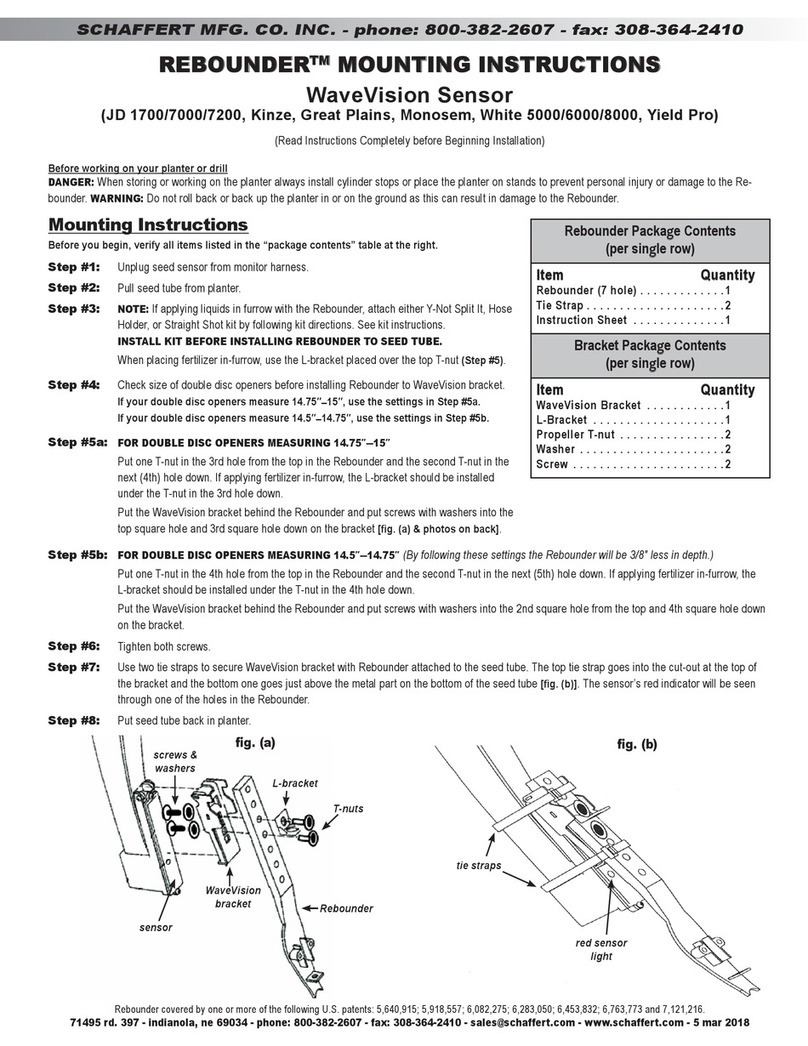
Schaffert
Schaffert Rebounder Mounting instructions

Stocks AG
Stocks AG Fan Jet Pro Plus 65 Original Operating Manual and parts list
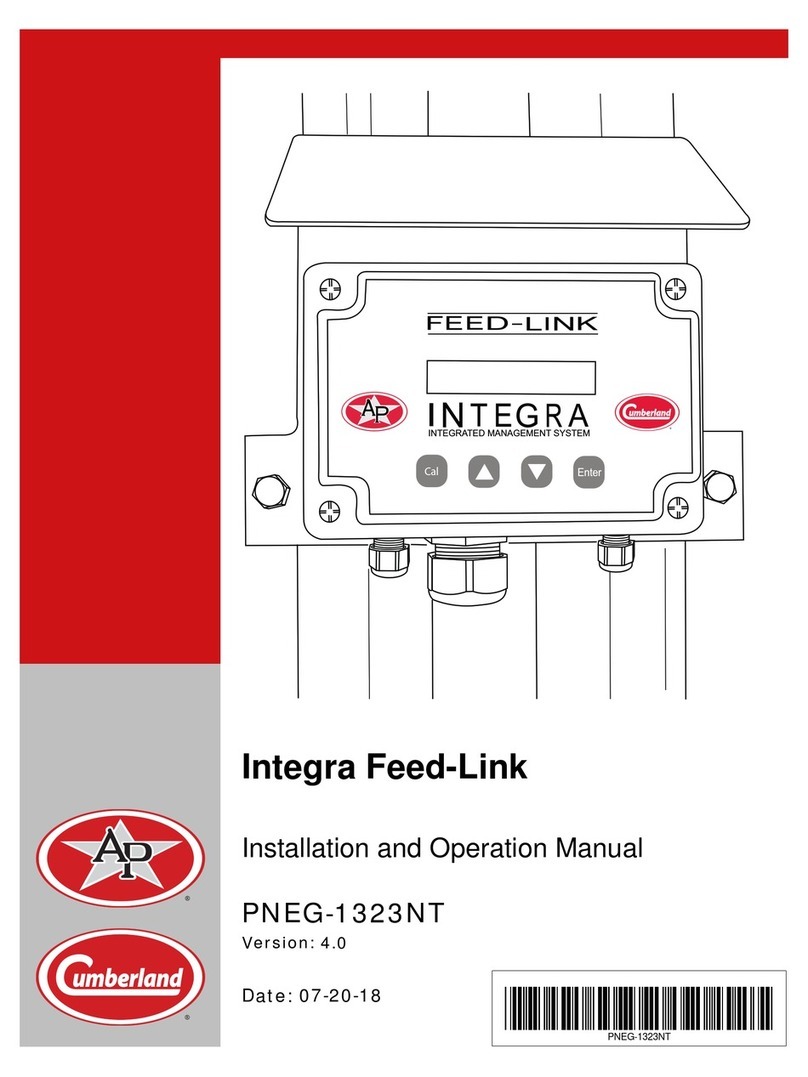
Cumberland
Cumberland Integra Feed-Link Installation and operation manual
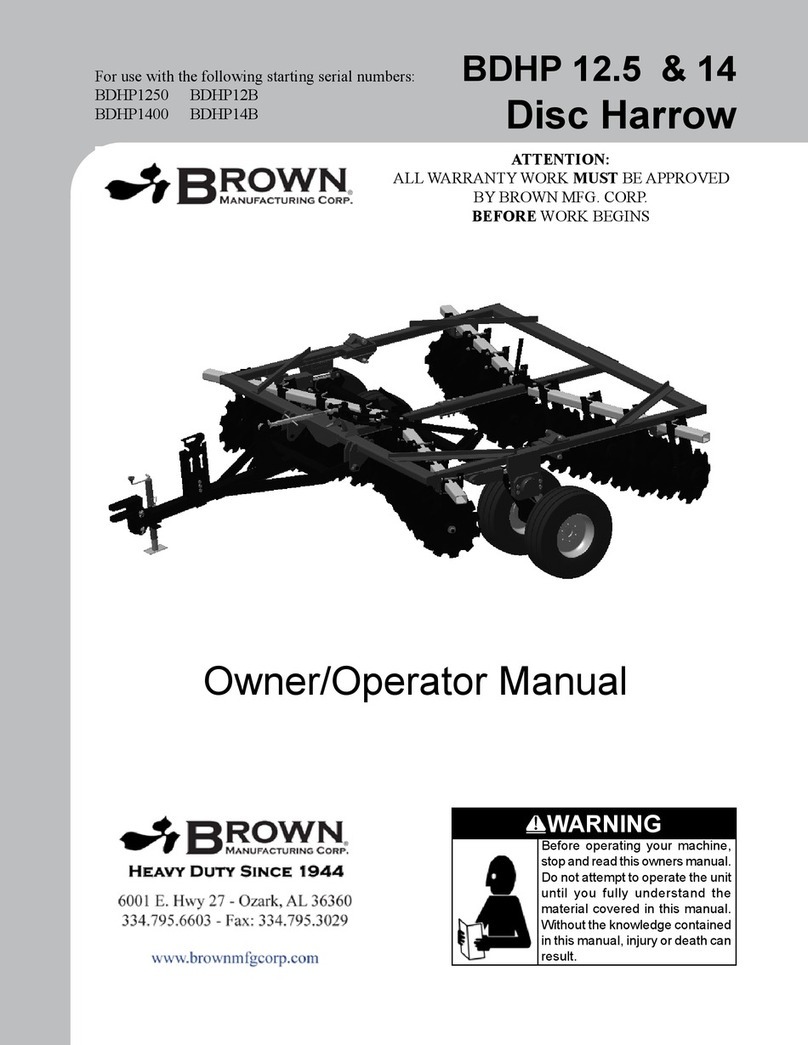
BROWN
BROWN BDHP-1250 Owner's/operator's manual
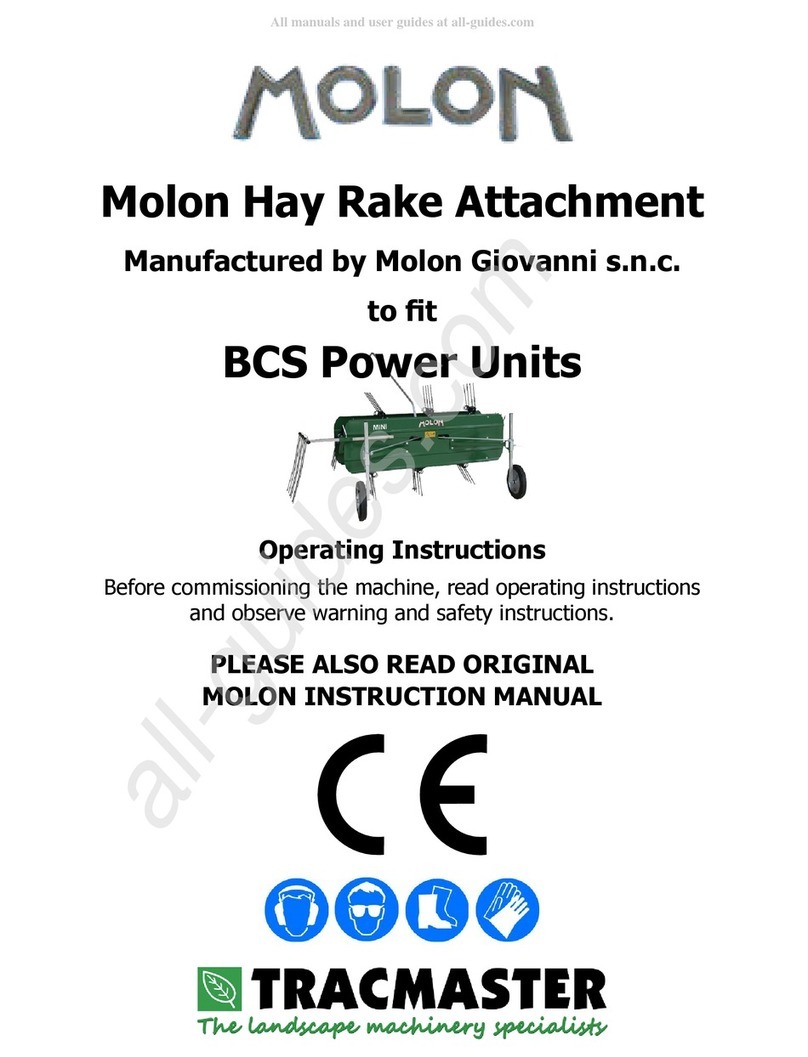
Molon
Molon BCS operating instructions
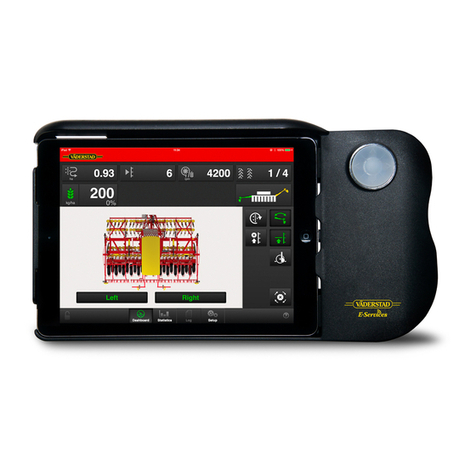
Vaderstad
Vaderstad Rapid Series instructions
